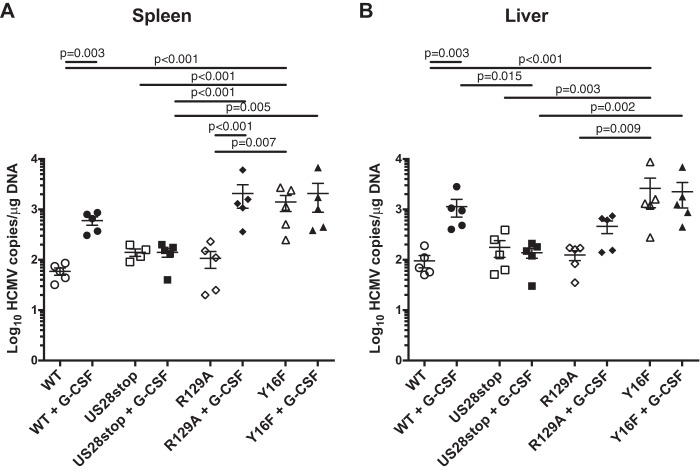FIG 7.
HCMV US28 ligand binding is required to maintain latency in vivo. Humanized NSG mice were injected with fibroblasts infected with either HCMV TB40E-GFP-WT, -US28stop, -US28-R129A, or -US28-Y16F (n = 10 per group). At 8 weeks postinfection, half of the mice were treated with G-CSF and AMD-3100 to induce cellular mobilization and promote HCMV reactivation. Control mice were left untreated. At 1 week postmobilization, mice were euthanized and tissues were collected. Total DNA was extracted using DNAzol, and HCMV viral load was determined by qPCR on 1 μg of total DNA prepared from spleen (A) or liver (B) tissue. Error bars represent standard deviations between average DNA copies from two (A) or four (B) tissue sections for individual animals. All samples were compared by one-way ANOVA within experimental groups (nonmobilized versus mobilized [+G-CSF] for each virus and between all virus groups for both nonmobilized and mobilized conditions). P values are listed for significant comparisons where P < 0.05.

